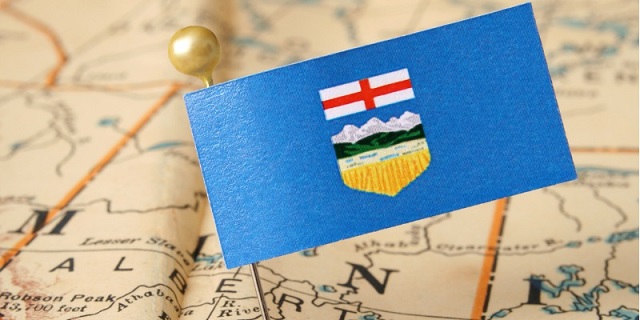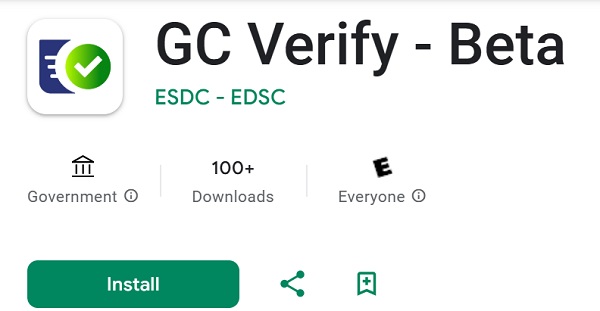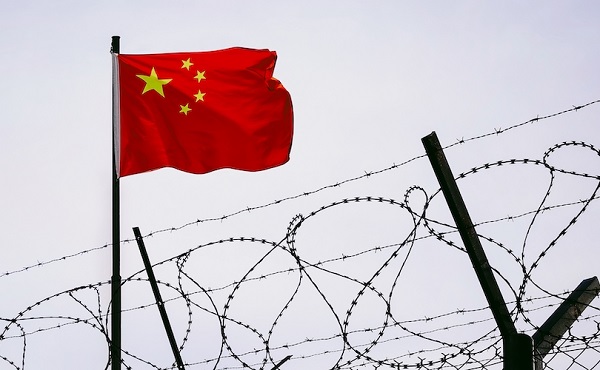Alberta
Leading proponent of Alberta Independence predicts provincial referendum in 2025

 Jeffrey Rath
Jeffrey Rath
Over one third of Albertans already support Independence from Ottawa
You know that Alberta is making progress towards an independence referendum in 2025 when both Alberta Premier Danielle Smith and Alberta Communist Leader Naheed Nenshi are discussing, considering, or teasing an Alberta Independence Referendum to be held in 2025.
This level of agreement between the two party leaders on the need for an independence referendum is demonstrative of the degree to which Alberta conversations on independence from Canada have taken hold around family dinner tables and in the pubs and community halls of the Commonwealth of Alberta.
Independent Journalist Rachel Parker has recently commissioned a poll that has support for Alberta Independence at 37%. It is noteworthy that there is presently 37% popular support for independence WITHOUT Albertans being educated on the benefits of Independence from Canada. Some of these benefits include:
- 60,000,000,000.00 (60 BILLION) dollars a year would remain in Alberta as opposed to being sent to Ottawa for “redistribution” to the mismanaged provinces of Canada.
- NO FEDERAL INCOME TAX
- NO CARBON TAX
- NO CAPITAL GAINS TAX
- NO GST
- NO EXCISE TAX
- NO MORE FEDERAL GUN GRABS
- NO MORE FEDERAL OVER REGULATION OF SPEECH, INTERNET COMMUNICATION, AGRICULTURE, TRAVEL, HEALTH, RESOURCE DEVELOPMENT, OR OTHER MATTERS OF CONCERN TO ALBERTANS.
- NO MORE MISGOVERNANCE BY FEDERAL POLITICIANS ELECTED BY MONTREAL AND TORONTO TO RULE ALBERTA.
The day Alberta declares independence Alberta’s GDP per capita would place Alberta as the the NUMBER ONE COUNTRY IN THE WORLD on the measure of GDP per capita. The end of all federal taxation and regulation will prompt an economic boom and overnight will increase the disposable income of every Albertan by at LEAST 35%.
This column is a call to action. Every Albertan fed up with having our rulers chosen by Toronto and Montreal need to forward this column to Danielle Smith and request that she pass the ALBERTA INDEPENDENCE REFERENDUM ACT.
THE ALBERTA INDEPENDENCE REFERENDUM ACT
Whereas successive Canadian Federal Governments have exceeded their constitutional jurisdiction through property seizures, excessive taxation and natural resource regulation aimed at the destruction of Alberta’s autonomy and sovereignty; and
Whereas the Government of Alberta has been mandated by referendum to bring an end to the payment of “equalization” dollars to provinces of Canada who continually mismanage their public finances;
The Alberta Legislature hereby enacts The Alberta Independence Referendum Act.
1. Within 6 months of every Canadian Federal Election the Government of Alberta shall call a provincial referendum on the Independence of Alberta from Canada.
2. The referendum question shall take the following form:
“Further to the over taxation and unconstitutional overreach of successive Governments of Canada aimed at harming the sovereign citizens of Alberta for the political benefit of successive governments of Canada, The Citizens of Alberta vote to remove Alberta from the Canadian Federation and form an Independent Commonwealth of Alberta.”
3. In furtherance of this legislation all Federal and Provincial taxes in Alberta shall be collected by the Government of Alberta.
4. Only such proportion of such taxes deemed by the government of Alberta to be for the common benefit of the Citizens of Alberta shall be remitted to the Government of Canada.
BY requiring a referendum following every Canadian Federal Election politicians pandering for votes from the idiots that think taxes can change the weather would have to consider the consequences of running on platforms that are based on the continued maldistribution of Alberta’s wealth.
Albertans need to understand that they would prosper by voting to confirm Alberta Independence from greedy politicians in Quebec and Ontario who claim to represent the failed colonial state of “Canada”.
An Alberta Dollar backed by the 3rd largest energy reserves in the world and the wealth of the Alberta Economy would be a stable currency with far greater value than the debt mired Canadian fiat currency.
Alberta Pensioners would see increased pension rates as Alberta could self fund Alberta Pensions out of the 60 BILLION no longer being siphoned out of Alberta by Quebec and Ontario until the 300 BILLION plus share of the Canada Pension plan was repatriated to Alberta.
Albertans need to write to Premier Smith and require her to pass the ALBERTA INDEPENDENCE REFERENDUM ACT prior to the expiry of the writ period for the next Federal Election. Regardless of whether a Conman Carney Liberal Government is elected or a Poilievre Conservative Government is elected, Federal Politicians need to be put on notice that they will continue to ignore or misgovern Alberta at their peril. By requiring an independence referendum following every Federal Election Alberta Voters will have the option of opting out of being governed by who ever Montreal and Toronto voters choose to misgovern Alberta against the will of the Citizens of Alberta.
There is no good reason or excuse for not creating a mechanism that will allow Albertans to put both the Government of Canada and the Government of Alberta on notice of their continued desire to remain in Canada following every Federal Election.
Legislation requiring a vote on independence following every federal election would give Danielle Smith and future leaders the leverage that they need to protect Alberta from globalists like Carney. Albertans should also beware that Pierre Poilievre has made it clear that a Conservative government will not stop Alberta wealth transfers to Quebec or stop ripping off Albertans for the benefit of the Laurentian Elite.
Remember, it’s all fun and games until someone loses a province.
Jeffrey R.W. Rath
Alberta
Alberta project would be “the biggest carbon capture and storage project in the world”

Pathways Alliance CEO Kendall Dilling is interviewed at the World Petroleum Congress in Calgary, Monday, Sept. 18, 2023.THE CANADIAN PRESS/Jeff McIntosh
From Resource Works
Carbon capture gives biggest bang for carbon tax buck CCS much cheaper than fuel switching: report
Canada’s climate change strategy is now joined at the hip to a pipeline. Two pipelines, actually — one for oil, one for carbon dioxide.
The MOU signed between Ottawa and Alberta two weeks ago ties a new oil pipeline to the Pathways Alliance, which includes what has been billed as the largest carbon capture proposal in the world.
One cannot proceed without the other. It’s quite possible neither will proceed.
The timing for multi-billion dollar carbon capture projects in general may be off, given the retreat we are now seeing from industry and government on decarbonization, especially in the U.S., our biggest energy customer and competitor.
But if the public, industry and our governments still think getting Canada’s GHG emissions down is a priority, decarbonizing Alberta oil, gas and heavy industry through CCS promises to be the most cost-effective technology approach.
New modelling by Clean Prosperity, a climate policy organization, finds large-scale carbon capture gets the biggest bang for the carbon tax buck.
Which makes sense. If oil and gas production in Alberta is Canada’s single largest emitter of CO2 and methane, it stands to reason that methane abatement and sequestering CO2 from oil and gas production is where the biggest gains are to be had.
A number of CCS projects are already in operation in Alberta, including Shell’s Quest project, which captures about 1 million tonnes of CO2 annually from the Scotford upgrader.
What is CO2 worth?
Clean Prosperity estimates industrial carbon pricing of $130 to $150 per tonne in Alberta and CCS could result in $90 billion in investment and 70 megatons (MT) annually of GHG abatement or sequestration. The lion’s share of that would come from CCS.
To put that in perspective, 70 MT is 10% of Canada’s total GHG emissions (694 MT).
The report cautions that these estimates are “hypothetical” and gives no timelines.
All of the main policy tools recommended by Clean Prosperity to achieve these GHG reductions are contained in the Ottawa-Alberta MOU.
One important policy in the MOU includes enhanced oil recovery (EOR), in which CO2 is injected into older conventional oil wells to increase output. While this increases oil production, it also sequesters large amounts of CO2.
Under Trudeau era policies, EOR was excluded from federal CCS tax credits. The MOU extends credits and other incentives to EOR, which improves the value proposition for carbon capture.
Under the MOU, Alberta agrees to raise its industrial carbon pricing from the current $95 per tonne to a minimum of $130 per tonne under its TIER system (Technology Innovation and Emission Reduction).
The biggest bang for the buck
Using a price of $130 to $150 per tonne, Clean Prosperity looked at two main pathways to GHG reductions: fuel switching in the power sector and CCS.
Fuel switching would involve replacing natural gas power generation with renewables, nuclear power, renewable natural gas or hydrogen.
“We calculated that fuel switching is more expensive,” Brendan Frank, director of policy and strategy for Clean Prosperity, told me.
Achieving the same GHG reductions through fuel switching would require industrial carbon prices of $300 to $1,000 per tonne, Frank said.
Clean Prosperity looked at five big sectoral emitters: oil and gas extraction, chemical manufacturing, pipeline transportation, petroleum refining, and cement manufacturing.
“We find that CCUS represents the largest opportunity for meaningful, cost-effective emissions reductions across five sectors,” the report states.

Fuel switching requires higher carbon prices than CCUS.
Measures like energy efficiency and methane abatement are included in Clean Prosperity’s calculations, but again CCS takes the biggest bite out of Alberta’s GHGs.
“Efficiency and (methane) abatement are a portion of it, but it’s a fairly small slice,” Frank said. “The overwhelming majority of it is in carbon capture.”

From left, Alberta Minister of Energy Marg McCuaig-Boyd, Shell Canada President Lorraine Mitchelmore, CEO of Royal Dutch Shell Ben van Beurden, Marathon Oil Executive Brian Maynard, Shell ER Manager, Stephen Velthuizen, and British High Commissioner to Canada Howard Drake open the valve to the Quest carbon capture and storage facility in Fort Saskatchewan Alta, on Friday November 6, 2015. Quest is designed to capture and safely store more than one million tonnes of CO2 each year an equivalent to the emissions from about 250,000 cars. THE CANADIAN PRESS/Jason Franson
Credit where credit is due
Setting an industrial carbon price is one thing. Putting it into effect through a workable carbon credit market is another.
“A high headline price is meaningless without higher credit prices,” the report states.
“TIER credit prices have declined steadily since 2023 and traded below $20 per tonne as of November 2025. With credit prices this low, the $95 per tonne headline price has a negligible effect on investment decisions and carbon markets will not drive CCUS deployment or fuel switching.”
Clean Prosperity recommends a kind of government-backstopped insurance mechanism guaranteeing carbon credit prices, which could otherwise be vulnerable to political and market vagaries.
Specifically, it recommends carbon contracts for difference (CCfD).
“A straight-forward way to think about it is insurance,” Frank explains.
Carbon credit prices are vulnerable to risks, including “stroke-of-pen risks,” in which governments change or cancel price schedules. There are also market risks.
CCfDs are contractual agreements between the private sector and government that guarantees a specific credit value over a specified time period.
“The private actor basically has insurance that the credits they’ll generate, as a result of making whatever low-carbon investment they’re after, will get a certain amount of revenue,” Frank said. “That certainty is enough to, in our view, unlock a lot of these projects.”
From the perspective of Canadian CCS equipment manufacturers like Vancouver’s Svante, there is one policy piece still missing from the MOU: eligibility for the Clean Technology Manufacturing (CTM) Investment tax credit.
“Carbon capture was left out of that,” said Svante co-founder Brett Henkel said.
Svante recently built a major manufacturing plant in Burnaby for its carbon capture filters and machines, with many of its prospective customers expected to be in the U.S.
The $20 billion Pathways project could be a huge boon for Canadian companies like Svante and Calgary’s Entropy. But there is fear Canadian CCS equipment manufacturers could be shut out of the project.
“If the oil sands companies put out for a bid all this equipment that’s needed, it is highly likely that a lot of that equipment is sourced outside of Canada, because the support for Canadian manufacturing is not there,” Henkel said.
Henkel hopes to see CCS manufacturing added to the eligibility for the CTM investment tax credit.
“To really build this eco-system in Canada and to support the Pathways Alliance project, we need that amendment to happen.”
Resource Works News
Alberta
Alberta Next Panel calls for less Ottawa—and it could pay off

From the Fraser Institute
By Tegan Hill
Last Friday, less than a week before Christmas, the Smith government quietly released the final report from its Alberta Next Panel, which assessed Alberta’s role in Canada. Among other things, the panel recommends that the federal government transfer some of its tax revenue to provincial governments so they can assume more control over the delivery of provincial services. Based on Canada’s experience in the 1990s, this plan could deliver real benefits for Albertans and all Canadians.
Federations such as Canada typically work best when governments stick to their constitutional lanes. Indeed, one of the benefits of being a federalist country is that different levels of government assume responsibility for programs they’re best suited to deliver. For example, it’s logical that the federal government handle national defence, while provincial governments are typically best positioned to understand and address the unique health-care and education needs of their citizens.
But there’s currently a mismatch between the share of taxes the provinces collect and the cost of delivering provincial responsibilities (e.g. health care, education, childcare, and social services). As such, Ottawa uses transfers—including the Canada Health Transfer (CHT)—to financially support the provinces in their areas of responsibility. But these funds come with conditions.
Consider health care. To receive CHT payments from Ottawa, provinces must abide by the Canada Health Act, which effectively prevents the provinces from experimenting with new ways of delivering and financing health care—including policies that are successful in other universal health-care countries. Given Canada’s health-care system is one of the developed world’s most expensive universal systems, yet Canadians face some of the longest wait times for physicians and worst access to medical technology (e.g. MRIs) and hospital beds, these restrictions limit badly needed innovation and hurt patients.
To give the provinces more flexibility, the Alberta Next Panel suggests the federal government shift tax points (and transfer GST) to the provinces to better align provincial revenues with provincial responsibilities while eliminating “strings” attached to such federal transfers. In other words, Ottawa would transfer a portion of its tax revenues from the federal income tax and federal sales tax to the provincial government so they have funds to experiment with what works best for their citizens, without conditions on how that money can be used.
According to the Alberta Next Panel poll, at least in Alberta, a majority of citizens support this type of provincial autonomy in delivering provincial programs—and again, it’s paid off before.
In the 1990s, amid a fiscal crisis (greater in scale, but not dissimilar to the one Ottawa faces today), the federal government reduced welfare and social assistance transfers to the provinces while simultaneously removing most of the “strings” attached to these dollars. These reforms allowed the provinces to introduce work incentives, for example, which would have previously triggered a reduction in federal transfers. The change to federal transfers sparked a wave of reforms as the provinces experimented with new ways to improve their welfare programs, and ultimately led to significant innovation that reduced welfare dependency from a high of 3.1 million in 1994 to a low of 1.6 million in 2008, while also reducing government spending on social assistance.
The Smith government’s Alberta Next Panel wants the federal government to transfer some of its tax revenues to the provinces and reduce restrictions on provincial program delivery. As Canada’s experience in the 1990s shows, this could spur real innovation that ultimately improves services for Albertans and all Canadians.
-

 Bruce Dowbiggin1 day ago
Bruce Dowbiggin1 day agoBe Careful What You Wish For In 2026: Mark Carney With A Majority
-

 Business8 hours ago
Business8 hours agoLargest fraud in US history? Independent Journalist visits numerous daycare centres with no children, revealing massive scam
-

 Energy1 day ago
Energy1 day agoNew Poll Shows Ontarians See Oil & Gas as Key to Jobs, Economy, and Trade
-

 Fraser Institute2 days ago
Fraser Institute2 days agoCarney government sowing seeds for corruption in Ottawa
-

 International2 days ago
International2 days agoNo peace on earth for ISIS: Trump orders Christmas strikes after Christian massacres
-

 Alberta2 days ago
Alberta2 days agoAlberta Next Panel calls for less Ottawa—and it could pay off
-

 Alberta1 day ago
Alberta1 day agoAlberta project would be “the biggest carbon capture and storage project in the world”
-

 Business9 hours ago
Business9 hours ago“Magnitude cannot be overstated”: Minnesota aid scam may reach $9 billion





